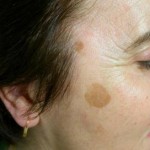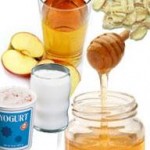 The natural pigmentation of the skin is not sufficient to fully protect from the sun because the sun is becoming stronger and harmful. You protectors to prevent spots, premature aging, burn, or melanoma (skin cancer), this because when tanning, ultraviolet radiation damages skin cells and alter the function of collagen and elastin.
The natural pigmentation of the skin is not sufficient to fully protect from the sun because the sun is becoming stronger and harmful. You protectors to prevent spots, premature aging, burn, or melanoma (skin cancer), this because when tanning, ultraviolet radiation damages skin cells and alter the function of collagen and elastin.
How much sun can you take? Depends on your skin color, the place where I do, the time of year and time. The skin has a memory, since your first exposure to the sun harmful effects accumulate. If you are exposed to too much sun, your skin will bill you after 30 years or earlier, saying the first epidermal intolerances.
Sun exposure before and during the vacation time you need to promote health. Here is a list of foods you should include in these days to strengthen your protection against the sun:
• Water and moisture that is essential for the skin condition. In summer, the body loses more water because there is increased sweating.
• The carotenoids accelerate tanning, since they increase the production of melanin, which acts as a protective screen and gives the skin a golden color, also protects against damage caused by solar radiation and aging. Eat them in carrots and peaches
• The omega-3 fatty acids protect against dehydration. In addition, act as agents relieving you inflammatory skin lesions. Get them fish such as herring, tuna, salmon and sardines. Also get those in nuts and soy.
• Vitamin C has antioxidant properties. Another function is the synthesis of collagen, which forms part of the structure of the skin. Consume them in citrus fruits such as oranges, tangerine, lemon and grapefruit.
• Vitamin E also has antioxidant and healing is essential in the repair of the alterations produced by the sun on the skin. Find it in olive oil, avocado and egg yolk.
• Some B vitamins such as vitamin B2 (riboflavin) and niacin are also involved in the maintenance of skin. Foods that provide vitamin B2 are milk, cheese, eggs, livers do, legumes and vegetables.



